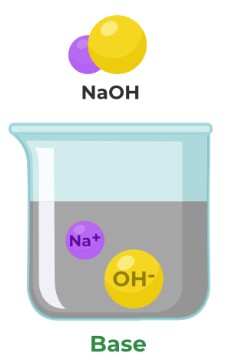This blog post will discuss the differences between acidic salts and basic salts. We will explore how they are formed, their properties, and their uses.
We will also look at why it is important to understand the difference between the two types of salts. By the end of this post, you will be able to identify the differences between acidic salts and basic salts.
Acids and bases

Acids and bases are two types of chemical compounds that have different effects on their environment. While both acids and bases have properties that are beneficial to everyday life, there are some key differences between the two.
Acids produce acidic salts, which are compounds that contain hydrogen and have a pH below On the other hand, basic salts are compounds that contain a metal cation and have a pH above
Acids and bases can be used for a variety of purposes, but it’s important to understand the difference between acidic and basic salts so that you can make the right choice for your needs.
Types of salts
Salts come in many different types, each with its own unique characteristics and properties. One of the key distinctions between different types of salt is whether it is an acidic salt, or a basic salt.
Basic salts, on the other hand, contain a basic anion, such as Hydroxide, Carbonate, and Oxide. The difference between these two types of salts can affect the taste, texture, and even the functionality of the salt.
Acidic salts have a sharper, more tart flavor, whereas basic salts tend to be milder and more mellow. In addition, acidic salts may be more reactive in certain situations, whereas basic salts may be less reactive. Understanding the difference between these two types of salts can help you choose the best salt for your cooking needs.
Difference between acidic salt and basic salt
The main difference between acidic salt and basic salt lies in their pH level. Acidic salts have a low pH level, while basic salts have a high pH level. Acidic salts are those that contain anionic groups, such as sulfates and phosphates, while basic salts are those that contain cationic groups, such as ammonium and potassium.
Acidic salts are those that contain anionic groups, such as sulfates and phosphates, while basic salts are those that contain cationic groups, such as ammonium and potassium. Acidic salts tend to be more acidic and have a sour taste, while basic salts are less acidic and have a bitter taste. Acidic salts are also more soluble in water than basic salts, making them useful for cleaning applications.
Basic salts, on the other hand, are less soluble in water and can be used to buffer pH levels in solutions.
Examples of acidic salts
Acidic salts are salts that have acidic properties due to the presence of hydrogen ions. They form when a neutral salt reacts with an acid, such as when hydrochloric acid is added to sodium chloride. Examples of acidic salts include sodium chloride, ammonium chloride, and sodium bicarbonate.
Examples of acidic salts include sodium chloride, ammonium chloride, and sodium bicarbonate. On the other hand, basic salts are salts that have basic properties due to the presence of hydroxide ions. They form when a neutral salt reacts with a base, such as when sodium hydroxide is added to sodium chloride.
Examples of basic salts include sodium hydroxide, calcium hydroxide, and potassium hydroxide. The key difference between acidic and basic salts is the ions present in the salt, with acidic salts containing hydrogen ions and basic salts containing hydroxide ions.
Examples of basic salts

The difference between acidic and basic salts can be a difficult concept to understand. To make it simpler, acidic salts are salts formed from the reaction of an acid and a base, while basic salts are salts formed from a reaction between a base and an acid. In terms of chemistry, acidic salts are considered to be salts that contain a hydrogen ion.
Basic salts, on the other hand, contain a hydroxide ion. Examples of basic salts include sodium hydroxide (NaOH), calcium hydroxide (Ca(OH)2), and potassium hydroxide (KOH).
Examples of acidic salts include sodium chloride (NaCl), ammonium chloride (NH4Cl), and potassium sulfate (K2SO4). It is important to note that acidic and basic salts play an important role in a variety of processes, from the production of soaps and detergents to the production of fertilizers.
Conclusion
In conclusion, acidic salts and basic salts are two different types of salts that serve different purposes. Acidic salts are generally used to neutralize acids and basic salts can be used to neutralize bases. Acidic salts have a pH lower than 7, while basic salts have a pH higher than
Acidic salts are composed of an acid and a base, while basic salts are composed of a base and an acid.

